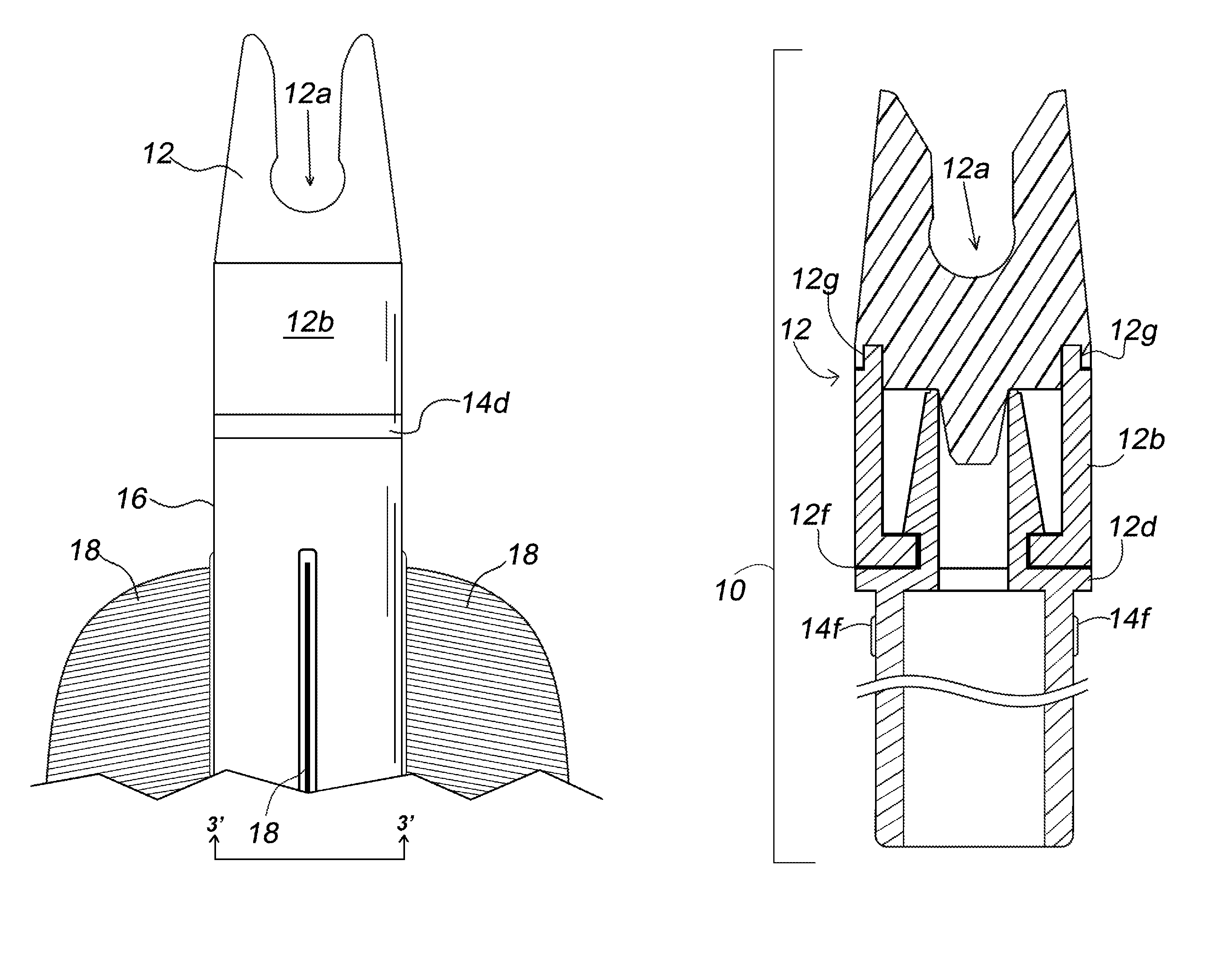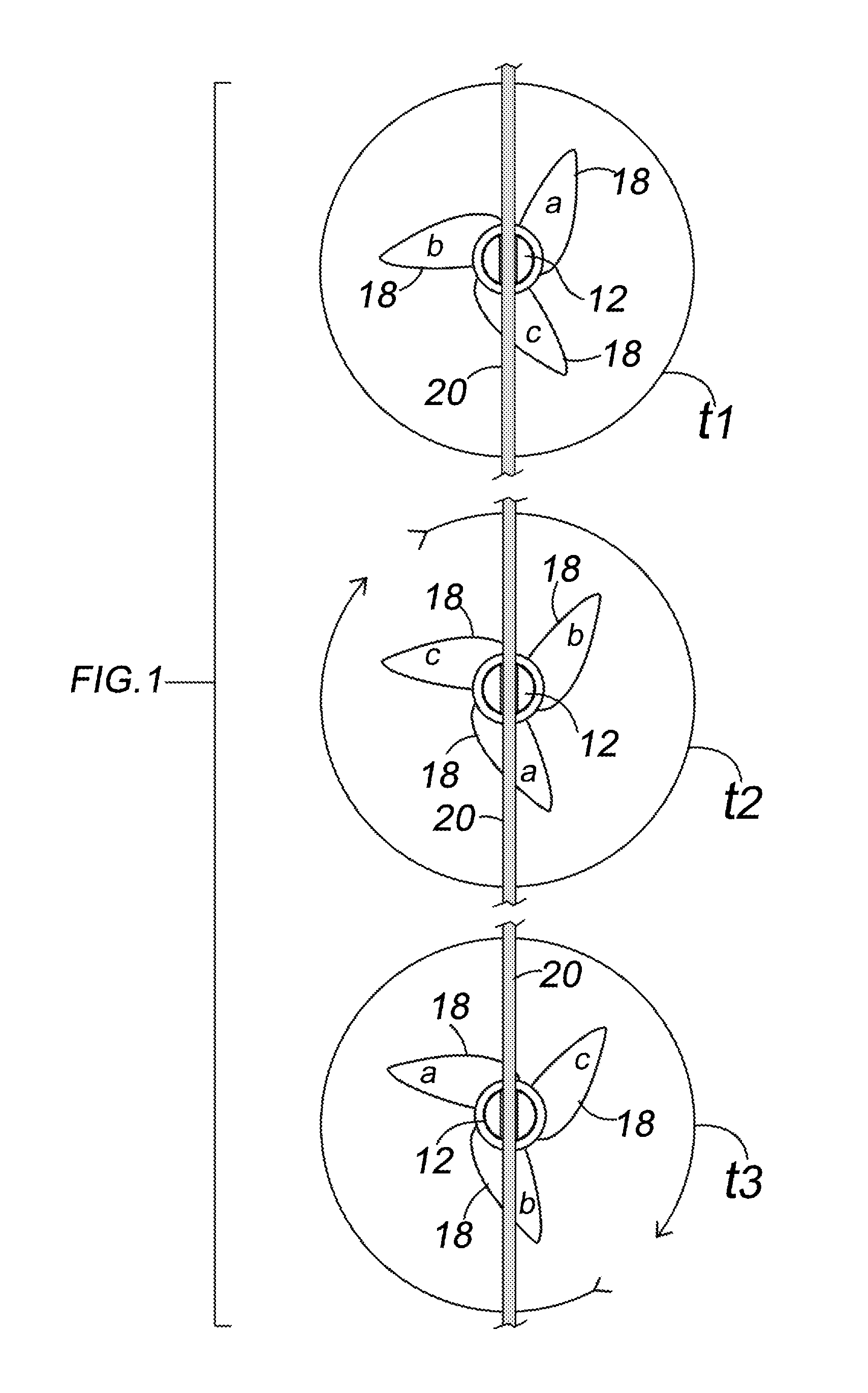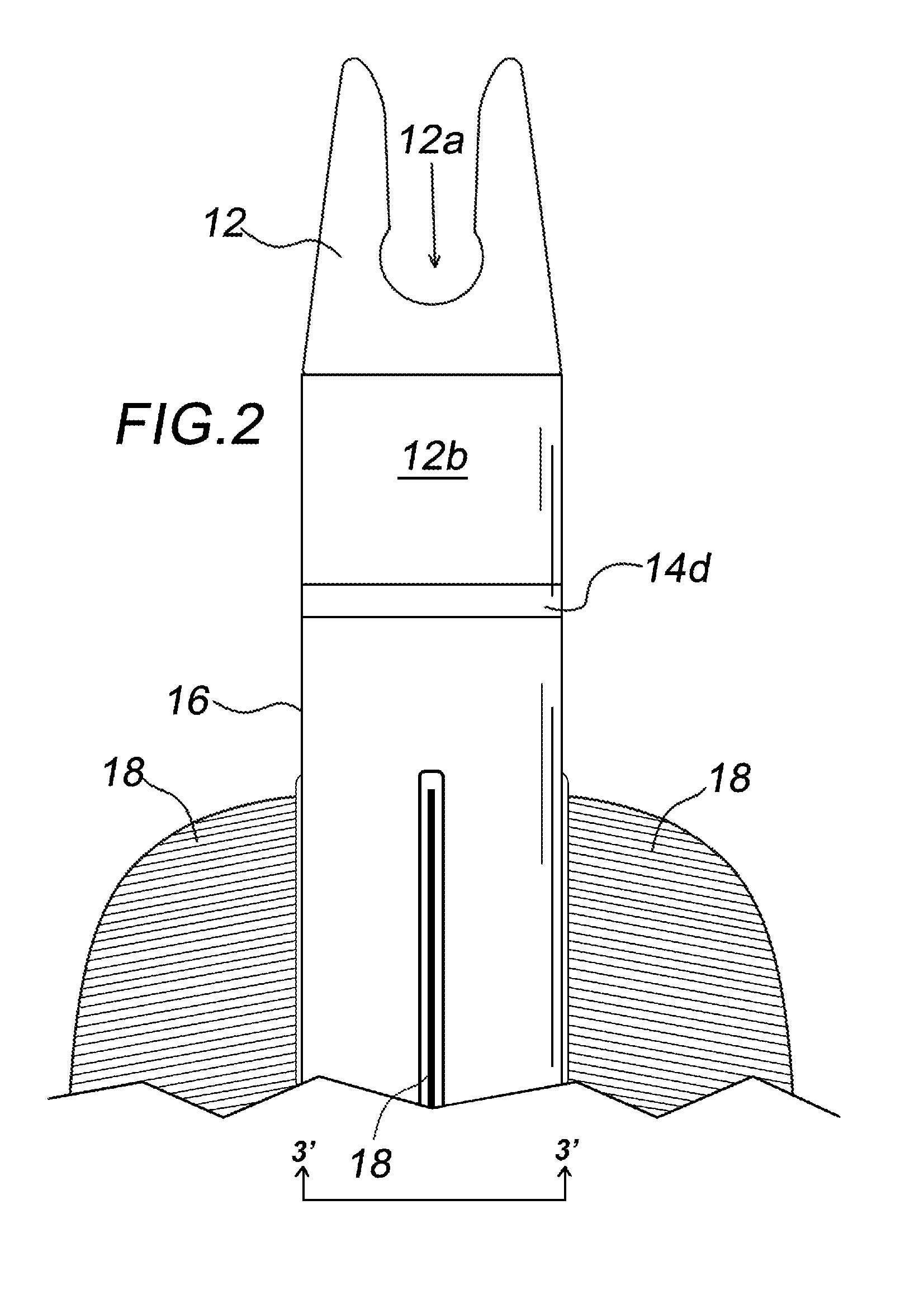Self centering spin nock
a spin nock and self-centering technology, applied in the direction of arrows, etc., can solve the problems of reducing the kinetic energy available for forward motion of the arrow, reducing the friction coefficient of the arrow, and struggling with the problem of promotion, so as to achieve low friction coefficient, reduce resistance, and transfer energy efficiently
- Summary
- Abstract
- Description
- Claims
- Application Information
AI Technical Summary
Benefits of technology
Problems solved by technology
Method used
Image
Examples
Embodiment Construction
Reference Listing
[0027]10′ nock assembly[0028]12 nock portion[0029]12a bowstring rest portion[0030]12b collar[0031]12c upper collar annulus[0032]12d lower collar annulus[0033]12e bowstring rest portion bottom[0034]12f interlocking members[0035]12g joint[0036]12h race[0037]12i lip[0038]14 retainer assembly[0039]14a projection[0040]14b shaft coupler[0041]14c thrust bearing[0042]14d plate[0043]14f friction fit tabs[0044]16 arrow shaft[0045]18 fletching[0046]20 bowstring
DEFINITIONS
[0047]The term “run-out” is a measure of the amount of off-centeredness of a rotating component. Unless otherwise explained, any technical terms used herein have the same meaning as commonly understood by one of ordinary skill in the art to which this disclosure belongs. The singular terms “a”, “an”, and “the” include plural referents unless the context clearly indicates otherwise. Similarly, the word “or” is intended to include “and” unless the context clearly indicates otherwise. Although methods and materia...
PUM
 Login to View More
Login to View More Abstract
Description
Claims
Application Information
 Login to View More
Login to View More - R&D
- Intellectual Property
- Life Sciences
- Materials
- Tech Scout
- Unparalleled Data Quality
- Higher Quality Content
- 60% Fewer Hallucinations
Browse by: Latest US Patents, China's latest patents, Technical Efficacy Thesaurus, Application Domain, Technology Topic, Popular Technical Reports.
© 2025 PatSnap. All rights reserved.Legal|Privacy policy|Modern Slavery Act Transparency Statement|Sitemap|About US| Contact US: help@patsnap.com



